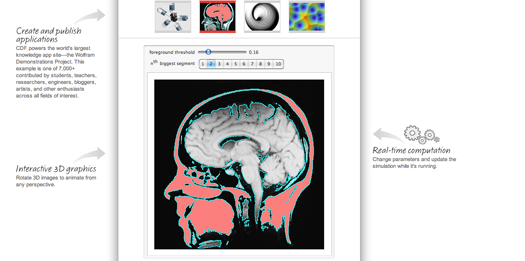Wolfram’s New ‘CDF’ Format Brings Computation Power to the Individual Document
We may earn revenue from the products available on this page and participate in affiliate programs. Learn more › The...

We may earn revenue from the products available on this page and participate in affiliate programs. Learn more ›
The PDF has long reigned as the universal document, one that can be read by almost any machine anywhere and be formatted to hold various kinds of information: text, charts, graphics, images, etc. But the problem with PDFs (or spreadsheets for that matter) is that they’re pretty static–with the exception of a few (admittedly handy) features, they are fixed in what they can do and convey. Wolfram Research is trying to change that with the Computable Document Format (CDF), a new kind of interactive document that brings computation to the document itself.
An easy way to think of the CDF is like a PDF with embedded apps. It’s a document that essentially computes within itself, adding a layer of interactivity to things like graphics and charts that let the user not only see data but explore it as well.
Think of something like a financial report from an investment firm. The author may want to allow the reader to not only see a particular fund’s numbers for the quarter, but also manipulate the data themselves. How much money could an investor have made if he or she invested five percent more with the firm? How much could he or she have made (or make) if he or she split her investment between a few different funds?
A CDF could accommodate an embedded app that allows the user to enter number values into an app in the document, adjust expected rates of return over time, or plug a range of other data and then view the quarterly data through his or her own customized lens. Similarly, things like digital textbooks in CDF format allow for interactive graphics that live inside the document, augmenting the learning experience and allowing students to participate in and manipulate the data presented to them.
It’s a pretty neat idea, but also one facing some challenges. For one, someone has to create these “knowledge apps,” and not every author is also a programmer (or well-funded enough to develop custom-tailored apps). To that end, Wolfram is trying to simplify the authoring process with a language of programming that simplifies the process. In other words, Wolfram wants to simplify the authoring of interactive apps such that they are no more difficult than building a macro in Microsoft Excel.
Another challenge is getting the CDF Player software itself to run. It took this PopSci writer and one PopSci editor–say what you will about the combined intellectual capacity at play here–working on two separate machines more than a couple of tries to get the CDF Player working properly in our browsers (one obvious hint: make sure to restart your browser after you download). But hey, the CDF is new and bound to be a bit buggy getting off the ground. You can download the CDF Player for free here, after which you can check out several neat examples of CDF’s interactivity here.